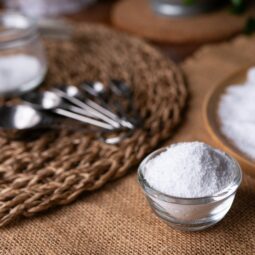Red, yellow, purple, green. The different colors of fruits and vegetables offer clear clues to what they do — and how they help — inside your body. The chart below highlights just a few of the colorful benefits, but don’t worry about memorizing it — just eat a wide variety of colors to make sure your body gets all the things it needs to function at its best. As dietitians say: “Eat the rainbow.”
| Colors/Plants | NATURAL COMPOUNDS/BENEFITS |
| Red-purple
Grapes, raisins, pomegranates, plums, prunes, cranberries, blueberries, blackberries, strawberries, cherries, red apples, red pears, red peppers, eggplant, red beets |
Anthocyanins, ellagitannins
Prevent cancer, heart disease and dementia by capturing “free radicals” that cause inflammation; prevent LDL cholesterol from sticking to artery walls |
| Red
Tomatoes and tomato soup, pink grapefruit, watermelon |
Lycopene
Blocks damage from free radicals, boosts the immune system, lowers LDL cholesterol, protects DNA |
| Orange
Carrots, mangoes, apricots, cantaloupe, pumpkin, acorn squash, winter squash, sweet potatoes |
Beta carotene, alpha carotene
Boosts immunity; protects against cell damage; aids reproductive function |
| Yellow-orange
Oranges, tangerines, yellow grapefruit, lemons, peaches, papaya, pineapple, nectarines |
Citrus flavonoids
Protect blood vessels from leaking or bursting; help cells resist oxygen damage; prevent too much inflammation in the body |
| Yellow-green
Spinach, collard greens, mustard greens, turnip greens, yellow corn, avocado, green peas, green beans, green peppers, yellow peppers, cucumbers, kiwi, romaine lettuce, zucchini, honeydew melon, muskmelon |
Lutein, zeaxanthin
Defends cells from damage; protects the eyes from cataracts and age-related macular degeneration |
| Green
Broccoli, Brussels sprouts, cabbage, cauliflower, Chinese cabbage, bok choy, kale |
Sulforaphane, isothiocyanates, indoles
Help detoxify cancer-causing agents by boosting liver enzymes |
| White-green
Garlic, onions, leeks, celery, asparagus, artichokes, endive, chives |
Allyl sulfides
Suppress tumor growth by preventing excess cell division; protect and support healthy cells |
COLORFUL RECIPE: SALSA CRUDA
Late summer/early fall is prime time for sun-ripened tomatoes, so get ’em while they’re hot. Those vibrant red, orange and yellow colors tell you that they’re loaded with lycopene and vitamin C — and they never taste better than when they’re in season. This easy uncooked salsa brightens any dish — try it on fish, chicken or pasta. If you prefer, you can warm it on the stove for a few minutes; cooking lowers the vitamin C, but boosts the lycopene. Either way, it’s delish.
- 2 garlic cloves, peeled and crushed
- 3 pounds mixed tomatoes, diced to 3/4″
- 1/2 cup fresh basil, chopped
- 3 Tbsp. olive oil
- 1 Tbsp. balsamic vinegar
- 1 Tbsp. red wine vinegar
- 1/2 tsp sea salt
- 1/4 tsp pepper
Rub a big bowl with the garlic, then discard the garlic. Add the tomatoes and lightly crush them with your hands to release their juices. Add remaining ingredients. Cover and let stand at room temperature for 30 minutes.
Makes 8 one-cup servings. Per serving: 75 calories, 5g fat (<1 g sat fat), 7g carbs, 2g fiber.
To spice it up: Add chopped jalapeño to taste.
For more zip: Toss in a teaspoon of capers.
As a meal: Add mini mozzarella balls.
Recipe from The American Diabetes Association.


